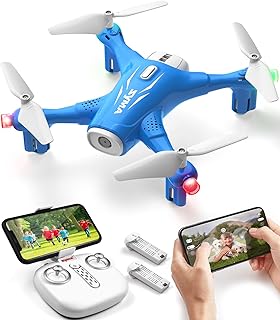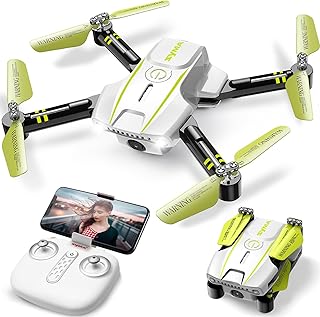The History and Evolution of SYMA Drones: From Toys to Tools
SYMA, a Chinese drone manufacturer, has carved a niche in the market by focusing on affordable and entry-level drones, primarily targeting beginners and hobbyists. Their journey has been marked by innovation and a continuous effort to enhance functionality and performance. Here's a glimpse into the history and evolution of SYMA drones:
Early Days (2000s):
* SYMA started its journey around the early 2000s, initially focusing on remote-controlled toys like helicopters and cars.
* They entered the drone market in the late 2000s with simple quadcopters, offering a budget-friendly introduction to aerial photography and videography.
* These early models were basic, primarily known for their affordability and ease of use.
Mid-2010s: Expansion and Innovation:
* SYMA began expanding its drone lineup, introducing models with more features like:
* Improved flight stability and control: Utilizing 6-axis gyroscopes and advanced flight controllers.
* Enhanced camera capabilities: Offering higher resolution cameras and the ability to capture photos and videos.
* Longer flight times: Introducing larger batteries and optimized power management.
* They also explored new functionalities like:
* GPS navigation and return-to-home: Enabling safer autonomous flight and preventing drone loss.
* Live video transmission: Allowing real-time viewing of the drone's perspective.
* This era saw the release of popular models like SYMA X5C, X5SW, X8C, and X8G, popularizing the brand amongst beginner drone enthusiasts.
Late-2010s and Beyond: Focus on User Experience:
* SYMA continued to improve upon its existing models, offering better flight stability, extended flight times, and improved image quality.
* They introduced drones with features catering to specific needs like:
* Foldable designs: Providing compact and portable drones for easier transport.
* FPV (First Person View) flight: Immersive flying experience using virtual reality headsets.
* Brushless motors: Delivering more power and efficiency, allowing for longer flight times and smoother control.
* They also expanded their product line with:
* Racing drones: Designed for speed and agility, catering to competitive drone racing enthusiasts.
* Agriculture drones: Specialized drones for spraying pesticides and monitoring crops.
* SYMA remained committed to affordability while focusing on user experience, making drones accessible to a wider audience.
Current Status and Future Outlook:
* SYMA remains a significant player in the entry-level drone market, offering a wide range of options at competitive prices.
* They continue to innovate, incorporating advanced features like obstacle avoidance, AI-powered flight control, and even 4K video recording.
* Their future focus will likely involve:
* Further improving flight stability and performance: Introducing more advanced flight control algorithms.
* Expanding into higher-end segments: Developing drones with features comparable to those of more expensive brands.
* Exploring new applications: Developing drones for specific industries like security, inspection, and delivery.
Conclusion:
SYMA's journey has been one of evolution and adaptation. From simple toys to feature-rich tools, their drones have provided a steppingstone for countless individuals to explore the exciting world of aerial photography, videography, and drone technology. As the drone market continues to evolve, SYMA's commitment to affordability, innovation, and user-friendliness will continue to shape its future success.


